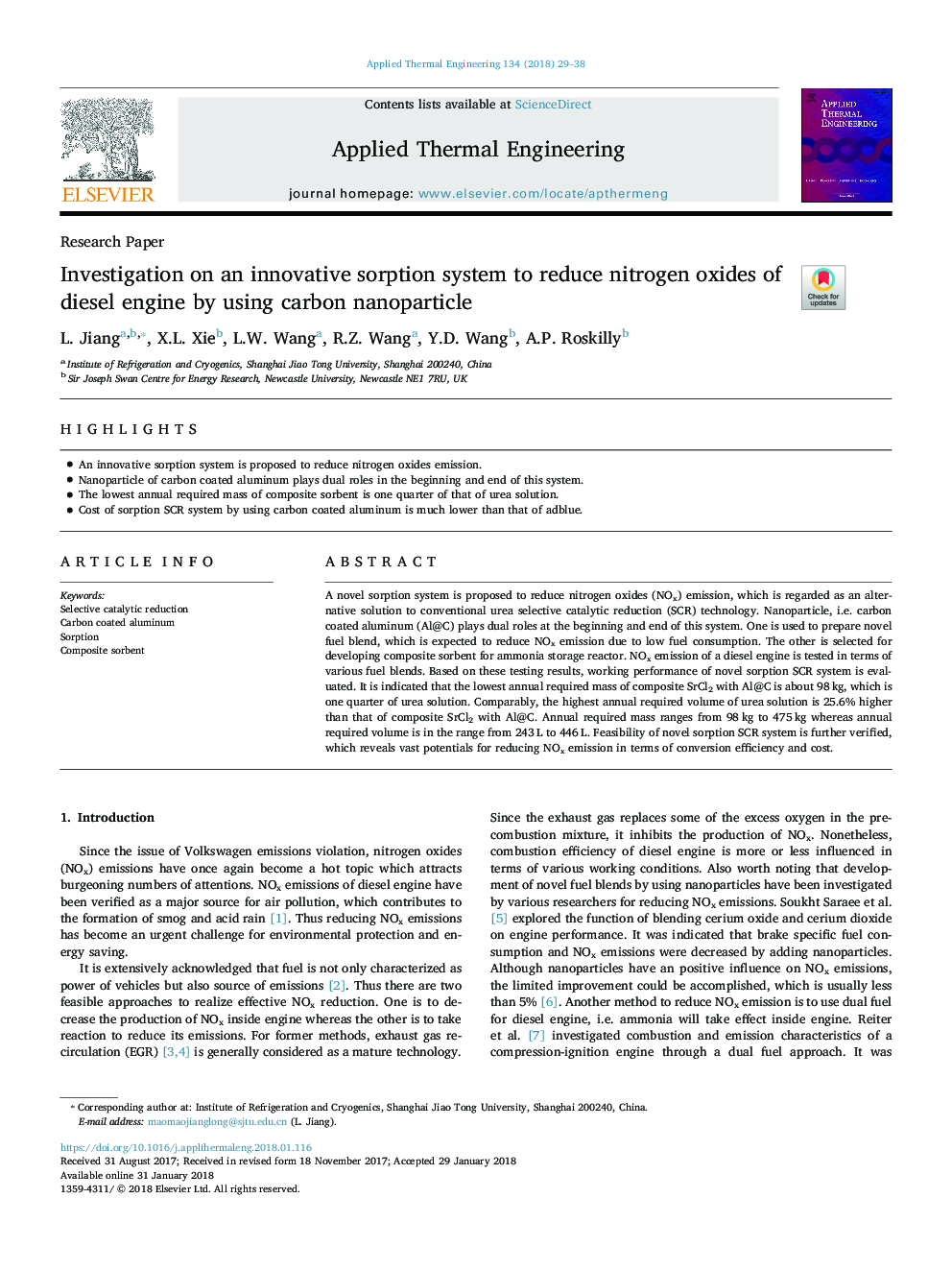| Article ID | Journal | Published Year | Pages | File Type |
|---|---|---|---|---|
| 7045767 | Applied Thermal Engineering | 2018 | 10 Pages |
Abstract
A novel sorption system is proposed to reduce nitrogen oxides (NOx) emission, which is regarded as an alternative solution to conventional urea selective catalytic reduction (SCR) technology. Nanoparticle, i.e. carbon coated aluminum (Al@C) plays dual roles at the beginning and end of this system. One is used to prepare novel fuel blend, which is expected to reduce NOx emission due to low fuel consumption. The other is selected for developing composite sorbent for ammonia storage reactor. NOx emission of a diesel engine is tested in terms of various fuel blends. Based on these testing results, working performance of novel sorption SCR system is evaluated. It is indicated that the lowest annual required mass of composite SrCl2 with Al@C is about 98â¯kg, which is one quarter of urea solution. Comparably, the highest annual required volume of urea solution is 25.6% higher than that of composite SrCl2 with Al@C. Annual required mass ranges from 98â¯kg to 475â¯kg whereas annual required volume is in the range from 243â¯L to 446â¯L. Feasibility of novel sorption SCR system is further verified, which reveals vast potentials for reducing NOx emission in terms of conversion efficiency and cost.
Related Topics
Physical Sciences and Engineering
Chemical Engineering
Fluid Flow and Transfer Processes
Authors
L. Jiang, X.L. Xie, L.W. Wang, R.Z. Wang, Y.D. Wang, A.P. Roskilly,
